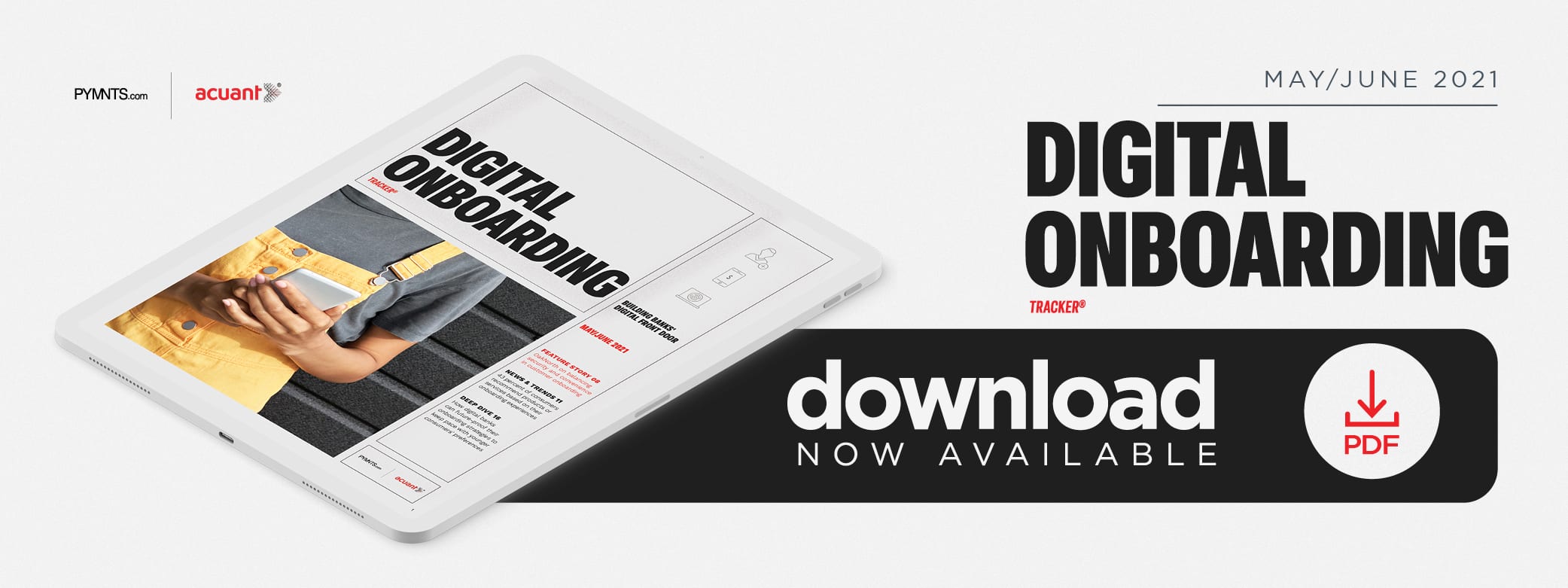Deep Dive: What New Digital Bank Customers Expect From Their Onboarding Experiences

 Generation Z consumers are well-known as tastemakers when it comes to pop culture, music and fashion, and their influence is quickly expanding to the financial industry as many begin to seek out banks for the first time. Most of these consumers prefer to bank with financial institutions (FIs) that have physical locations, but 37.5 percent said they would prefer to use digital-only banks for their financial needs. Several factors have shaped Gen Z consumers’ expectations, including their digital immersion since birth and the fact that they have come of age during an unprecedented digital banking surge.
Generation Z consumers are well-known as tastemakers when it comes to pop culture, music and fashion, and their influence is quickly expanding to the financial industry as many begin to seek out banks for the first time. Most of these consumers prefer to bank with financial institutions (FIs) that have physical locations, but 37.5 percent said they would prefer to use digital-only banks for their financial needs. Several factors have shaped Gen Z consumers’ expectations, including their digital immersion since birth and the fact that they have come of age during an unprecedented digital banking surge.
Gen Z consumers and their millennial counterparts represent more than $3 trillion in potential spending and investing, giving them a considerable say in shaping the direction of digital banking for the next half-century. Seamless and secure onboarding is a key demand among these younger generations, and banks are scrambling to accommodate their needs to turn them into lifelong customers.
The following Deep Dive explores what Gen Z customers expect when it comes to their digital banking experiences — especially those related to onboarding — and how banks are working to turn their desires into reality.
Why Seamless And Secure Onboarding Is Of Utmost Importance
Younger banking customers tend to value user experience when it comes to online banking, with some surveys finding that it ranks second behind low fees as their top priority. Digital consumers from other generations are of much the same opinion, with a Deloitte study finding that 38 percent of all digital bankers rank user experience as the most critical factor when selecting an FI.
Onboarding is a critical step in the user experience, as it represents the first interaction between consumers and banks, setting the tone for their financial relationships — and bad experiences can result in consumers’ abrupt departures. A July 2020 study of leading banks found that opening an account can take anywhere from 24 to 120 clicks, with some FIs forcing customers to wait up to 36 days before they are given full access to their accounts. This stands in stark contrast to the digital interactions younger generations experience in other parts of their lives. It takes only minutes to apply and receive approval for an Apple Card, for example, and consumers can begin using the product immediately.
Some banks might be inclined to eschew Gen Z consumers’ opinions due to their relative lack of wealth and investment opportunities compared to older generations, but this situation is only temporary. Millennials and Gen Z consumers are expected to account for $30 trillion in wealth over the coming decade, and their preferences are decidedly digital. Half of Gen Z bank customers use digital wallets, for example, and more than 75 percent of Gen Z adults use other digital payment apps. Younger banking customers are extremely likely to switch FIs if they are unsatisfied, representing massive opportunity costs if their needs go unmet.
It is thus no wonder that banks are swiftly improving their onboarding processes and other digital systems to suit their younger customers’ tastes. These adjustments largely consist of two separate but equally important components: new technologies that streamline the onboarding process and technology platforms that can seamlessly introduce new apps to future-proof customer experiences.
The Technological Solutions To Smooth Onboarding
The first step to ensuring seamless and secure onboarding for customers is to have the right technologies in place. Customers are particularly averse to inputting redundant information in different data fields, such as having to type in their names more than once on different pages. Many banks and businesses are addressing this issue with data capture systems that can automatically complete forms with previously provided information, and some are even leveraging third-party partnerships with financial services providers like Google Pay or PayPal to automate payment card entry. Third-party partnerships are also valuable for digital signatures and remote document authentication, both of which can allow customers to skip branch visits and verify their identities from home.
Banks must continually adjust their onboarding strategies to keep pace with today’s blistering pace of digital innovation. Banks looking to future-proof their onboarding experiences must ensure that their back-end systems can seamlessly implement new apps as they are developed. Consumers’ preferences are constantly changing based on their experiences with non-financial platforms, like food ordering and eCommerce, and they expect their banks to be just as efficient. Implementing back-end systems that cannot support the latest technologies is a near-surefire recipe for customer friction and abandonment.
Younger generations might hold only a small fraction of the world’s wealth now, but they will soon be the global economy’s power players. Banks must not only meet their preferences but must also keep tabs on how they evolve to deliver onboarding systems that meet them where they are.